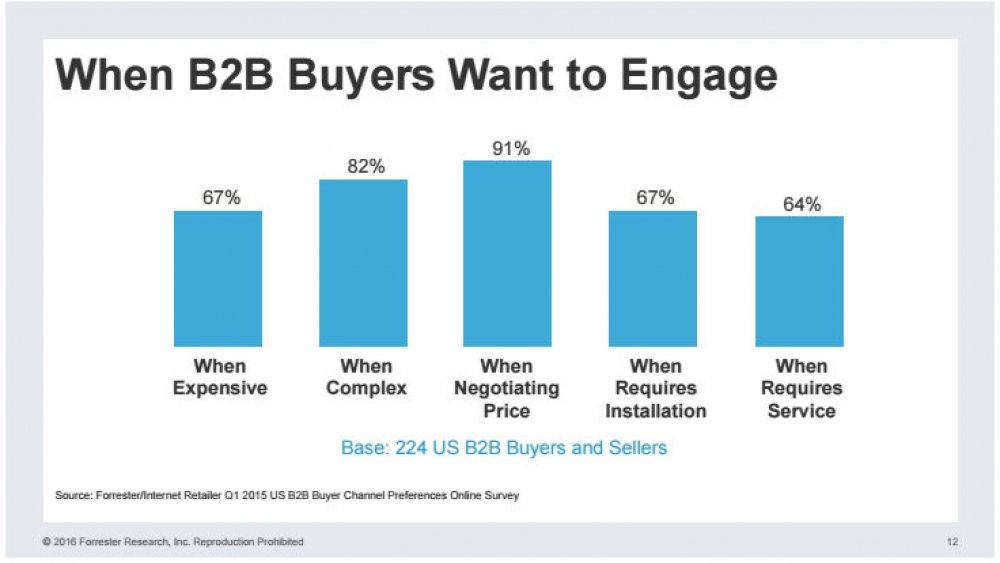Sales In Transition: How To Thrive In The Age Of The Customer
- Written by Carol Krol
- Published in Blog
As digitally-savvy business buyers become more self-directed and less reliant on sales reps, the role of the sales person is going through a major transition. Both marketing and sales teams need to adapt their approach, and that will require new skills and new tools.
“You have to find ways to ready up,” said Mary Shea, a Principal Analyst at Forrester Research, who spoke at InsideView’s Drive event in New York City last week about the changing sales role. Shea, who leads Forrester’s sales effectiveness initiative, explained that assessing, aligning and enabling the sales force should take center stage for organizations that want to thrive in the age of the customer.
“The status quo does not work. You need to embrace new tools and training,” she said. And because sellers are getting less and less time with their buyers, she explained, “the quality of interactions has to be so much higher than it has in the past.”
To borrow from Twain, the death of the sales executive is greatly exaggerated. Salespeople will retain an important, though changing role in the future, Shea predicted. B2B buyers still want to engage with sales in specific instances. “We still want to hear from the expert,” Shea said. According to the Forrester’s B2B Buyer Channel Preferences survey, B2B buyers want to engage:
- When a purchase is expensive (67%);
- When a purchase is complex (82%);
- When negotiating price (91%);
- When a purchase requires installation (67%); and
- When a purchase requires service (64%).
Selling needs to become more consultative, and less “order taking,” Shea noted. And hiring for consultative sales reps is “very different from what you may have been hiring for in the last five to 10 years.” She recommended six traits to seek out in sales recruits to identify salespeople who have consultative selling acumen. Recruits should:
- Embrace technology;
- Share new ideas;
- Exhibit business acumen;
- Communicate effectively;
- Seek collaboration; and
- Leverage data.
The millennial influx — they make up a third of sales in organizations today — is also impacting sales teams, Shea said. “They’re the internet generation,” she said. “Eighty-two percent of Millennials use social media. They lived through the economic downturn of 2008. It impacts how they’ll engage with you as managers, and how they’ll engage with customers.”
Enabling that workforce with social selling tools is a key piece of success for B2B companies, and using social media as a business tool is finding its way into the strategy. Sales and marketing departments are developing B2B social selling programs across a range of industries as the ROI for such initiatives
becomes more apparent, Shea said, though they are in the earliest stages. The social forum also benefits buyers, she noted, as the social connections tend to be more authentic, and as they become desensitized to the more traditional sales messages and channels of the past.
However, Shea cautioned that a LinkedIn Sales Navigator license alone, while powerful, doesn’t constitute a comprehensive strategy. Shea said it is crucial to make sure executive buy-in, proper planning and capital and resource investment lay the foundation for successful social selling. She also said marketing must be aligned with sales in order to communicate consistently and offer engaging content. “Tight integration and collaboration between marketing and sales are essential for program success,” she said. “Marketing needs to help sales understand how to use content across different channels.”
Shea shared 10 critical success factors involved in launching and sustaining a successful B2B social selling program, sourced from a Forrester report she wrote, Embrace B2B Social And Meet Buyers On Their Terms:
- Get executive buy-in;
- Line up resources;
- Identify content gaps;
- Start with a pilot;
- Link to metrics;
- Integrate into existing processes;
- Commit to ongoing training;
- Have clear policies and governance;
- Invest in the best platforms; and
- Provide ongoing motivation and visibility.
“There’s no more sales funnel,” Shea said. “Now, because of the way your buyer engages, you have a non-linear journey with a series of steps. Marketing needs to be a huge piece of this.”




